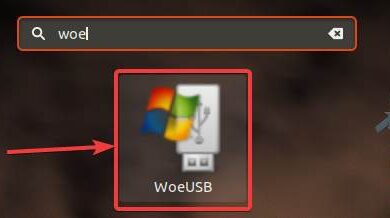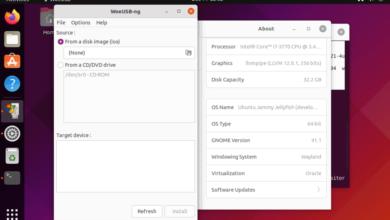Sway Markets Complete Guide, Features, Pros & How It Works (2025)

In the rapidly evolving world of financial technology and decentralized finance (DeFi), Sway Markets has emerged as a promising new platform. Whether you’re an investor, a trader, or a tech enthusiast, understanding what Sway Markets offers could position you ahead of the curve.
This article provides a complete, in-depth overview of Sway Markets—covering what it is, how it works, key features, benefits, use cases, and everything else you need to know in 2025.
Table of Contents
- What Is Sway Markets?
- The Mission Behind Sway Markets
- How Does Sway Markets Work?
- Key Features of Sway Markets
- Sway Markets vs Traditional Trading Platforms
- Supported Markets and Assets
- Tokenomics and Native Token (if applicable)
- Advantages of Using Sway Markets
- Possible Risks and Challenges
- Sway Markets for Beginners: Getting Started
- Sway Markets for Developers and Institutions
- Security Measures and Data Privacy
- Community and Ecosystem
- Roadmap: What’s Coming in 2025 and Beyond?
- Final Thoughts: Is Sway Markets Worth It?
What Is Sway Markets?
Sway Markets is a decentralized, blockchain-based trading and prediction platform that leverages community-driven sentiment to move financial markets. It merges decentralized trading, sentiment analysis, and synthetic assets to provide a new-age trading experience.
Users can trade real-world assets like stocks, cryptocurrencies, forex, and commodities using tokenized derivatives, powered by smart contracts.
Sway Markets is part of the new wave of DeFi protocols that bring transparency, liquidity, and inclusivity to global finance.
The Mission Behind Sway Markets
The central mission of Sway Markets is to “democratize access to financial markets through community insight and blockchain technology.”
The platform aims to:
- Eliminate middlemen and gatekeepers
- Allow 24/7 trading of global assets
- Make market sentiment a driving force
- Provide low-fee, transparent trading options
This positions Sway Markets as a revolutionary disruptor in the financial services industry.
How Does Sway Markets Work?
Sway Markets uses blockchain-based synthetic assets and prediction markets to offer a decentralized trading experience.
Here’s how it works step-by-step:
- Asset Tokenization
Traditional assets (e.g., Apple stock or gold) are represented as synthetic tokens backed by collateral in smart contracts. - Sentiment Indexing
The platform collects user sentiment through polling, trading behavior, and prediction participation to influence asset prices or forecasts. - Decentralized Trading
Traders can buy or short tokenized assets using a peer-to-peer mechanism, avoiding traditional brokers. - Settlement
Trades are settled automatically using smart contracts based on real-world price feeds (via oracles like Chainlink). - Rewards & Staking
Users are rewarded in the native token for participating, voting, staking liquidity, or making accurate predictions.
Key Features of Sway Markets
Let’s explore the most prominent features that make Sway Markets stand out:
Decentralized Asset Trading
Trade synthetic versions of real-world stocks, currencies, and commodities using crypto collateral.
Sentiment-Driven Predictions
Harness the power of community wisdom. Market trends are influenced by collective sentiment metrics.
Smart Contract Automation
No middlemen—everything from order execution to settlement is done via transparent smart contracts.
User-Generated Markets
Users can create new prediction markets based on political events, sports, finance, and more.
24/7 Global Access
Sway Markets operates without market hours, meaning global users can trade anytime.
Non-Custodial Wallet Integration
Trade using Metamask, WalletConnect, or other Web3 wallets—you retain full control over your funds.
Sway Markets vs Traditional Trading Platforms
| Feature | Sway Markets | Traditional Brokerages |
|---|---|---|
| Accessibility | Global, 24/7 | Limited to business hours |
| Intermediaries | None (decentralized) | Multiple |
| Control Over Funds | Full (non-custodial) | Custodial |
| Transparency | Full (on-chain) | Limited |
| Fees | Low | Often high |
| KYC/AML | Optional/minimal | Mandatory |
| Speed of Settlement | Instant (blockchain) | 2–3 days typical |
Sway Markets offers unprecedented flexibility and transparency, giving users the power to trade with freedom and fewer restrictions.
Supported Markets and Assets
Sway Markets supports a wide range of synthetic and tokenized assets, including:
- Stocks (Apple, Tesla, Google, etc.)
- Commodities (Gold, Silver, Oil)
- Cryptocurrencies (Bitcoin, Ethereum, Solana, etc.)
- Forex Pairs (USD/EUR, JPY/GBP)
- Index Funds (S&P 500, Nasdaq)
- Prediction Events (Election results, sports outcomes)
The platform continuously adds new asset classes based on community demand and market relevance.
Tokenomics and Native Token
Sway Markets has its own utility and governance token—usually referred to as SWAY (hypothetical ticker).
SWAY Token Use Cases:
- Governance voting (protocol updates, fee models)
- Staking for rewards
- Collateral for trading synthetic assets
- Access to premium markets or analytics
- Incentives for accurate predictions
Token Supply:
- Total supply: 1 billion
- Circulating supply: 400 million (as of 2025)
- Distribution: 40% community, 25% development, 20% staking rewards, 15% strategic partners
This tokenomics structure is designed to empower the community and create long-term value.
Advantages of Using Sway Markets
Here are the top reasons why traders and investors are choosing Sway Markets in 2025:
- Decentralized and trustless infrastructure
- Low-cost trading with minimal slippage
- High liquidity via decentralized pools
- Global access with no geographic restrictions
- Earn passive income via staking and rewards
- Sentiment-based analysis tools unavailable on other platforms
- Interoperability with major wallets and chains
Possible Risks and Challenges
While Sway Markets offers numerous benefits, users should also be aware of potential downsides:
❗ Smart Contract Risks
Bugs or vulnerabilities in smart contracts could lead to fund losses.
❗ Regulatory Uncertainty
DeFi platforms often face scrutiny in certain jurisdictions.
❗ Synthetic Asset Volatility
Synthetic prices may not perfectly reflect real-world prices due to liquidity gaps or oracle issues.
❗ Impermanent Loss
Liquidity providers in pools could face temporary losses depending on asset price movement.
Users should DYOR (Do Your Own Research) and understand the risks before investing.




